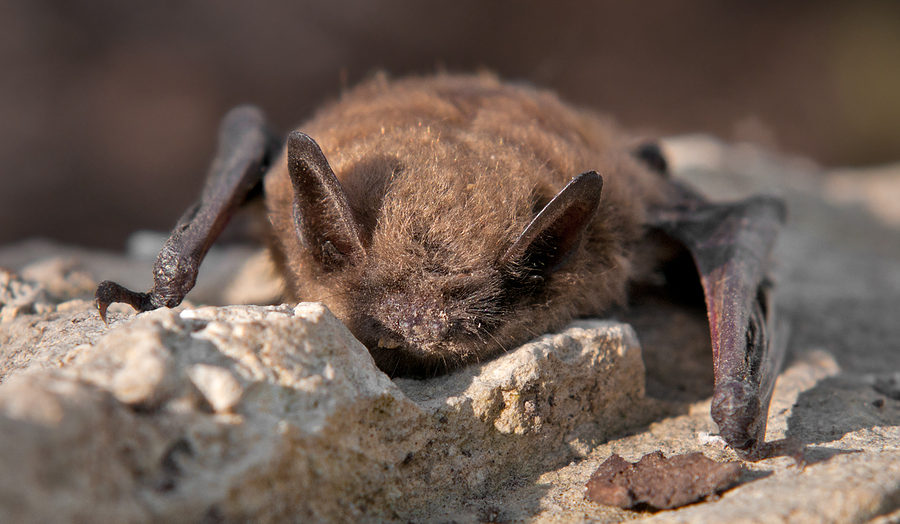Here in Indiana, there are many species of nuisance wildlife. But when it comes to bats, they are at the top of the list. Bats are highly destructive to houses and buildings, and pose many health hazards as common carriers of several infectious diseases. There are three species of bat that are the most common nuisance bats found in Indiana, so if you have bats in the attic or house, it is likely one of these three species.
Continue reading to learn more about each species of bat native to Indiana, and how to safely get rid of them.

Big Brown Bat
The Big Brown Bat is a member of the fuscus species, and most native to North America, the Caribbean, and even parts of Central America. As medium-sized bats, they grow up to 13 centimeters in length, and can weight up to 16 grams. Like the Little brown bat, they are also nocturnal, echolocating, and insectivorous. They roost during the day, usually in hollow trees, and hunt for insects at night. They are known as a nuisance bat in some areas, commonly taking refuge in residential and commercial structures like sheds, attics, crawl spaces, and more.
Little Brown Bat
The little brown bats are among the most common bats found in North America. They are covered in shiny brown, sleek-looking fir, with a lighter patch of fir on their bellies. They are usually around 3 to 3 ½ inches in length, and weigh only a fraction of an ounce. Although small, their average wingspan is more than double their body length, generally between 6 and 8 inches. They can live up to 30 years or more, average between 20 and 30 years specifically.
Breeding season is generally around September and October, but females actually store the male sperm for springtime fertilization, making baby bats born in the summer. Gestation is generally 50 to 60 days, and once born, sexual maturity is reached between 6 and 8 months. Females generally give birth to just one bat pup a year, but sometimes two.
Mexican Free-Tailed Bat
Mexican Free-Tailed bats are sometimes known as Brazilian Free-Tail bats, but also called Guano bats, because they produce large amounts of droppings. They are also incredibly fast at flying, reaching up to 99 miles per hour! In fact, they are now proven to be the fasted flying animal in the world, being 30 miles per hour faster than the fastest bird! Furthermore, they can fly higher than any other bat, at extremely high altitudes up to 10,000 feet. No other animal or human can survive this altitude because of the lack of oxygen!
As for their name, it is derived from their free-hanging tail that extends beyond their tail membranes. And they also have wrinkled lips, distinctive to their particular genus. When it comes to being a nuisance, Mexican Free-Tailed bats might be the most destructive since they form the largest colonies out of all other warm-blooded species. If you have an infestation of these in your attic, it can be a long and expensive renovation.
Non-Lethal Indiana Bat Removal and Control
If you have nuisance bats, call 317-535-4605 to speak with a friendly and knowledgeable wildlife abatement specialist about Indianapolis bat removal services and solutions. Don’t let bats damage your property and cost you thousands of dollars in renovations! Let our DNR licensed and insured bat removal specialists provide the workable solutions you need.

